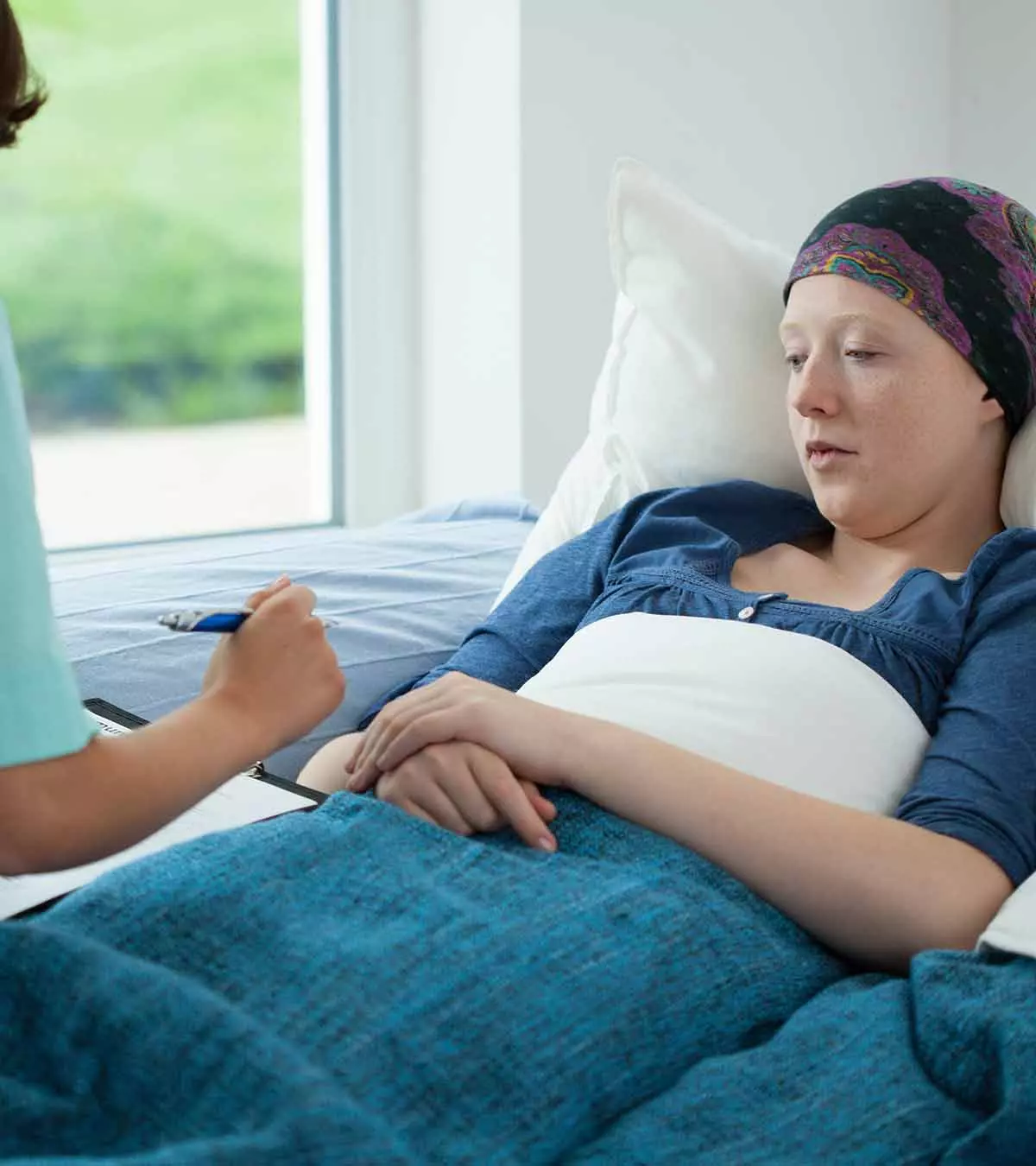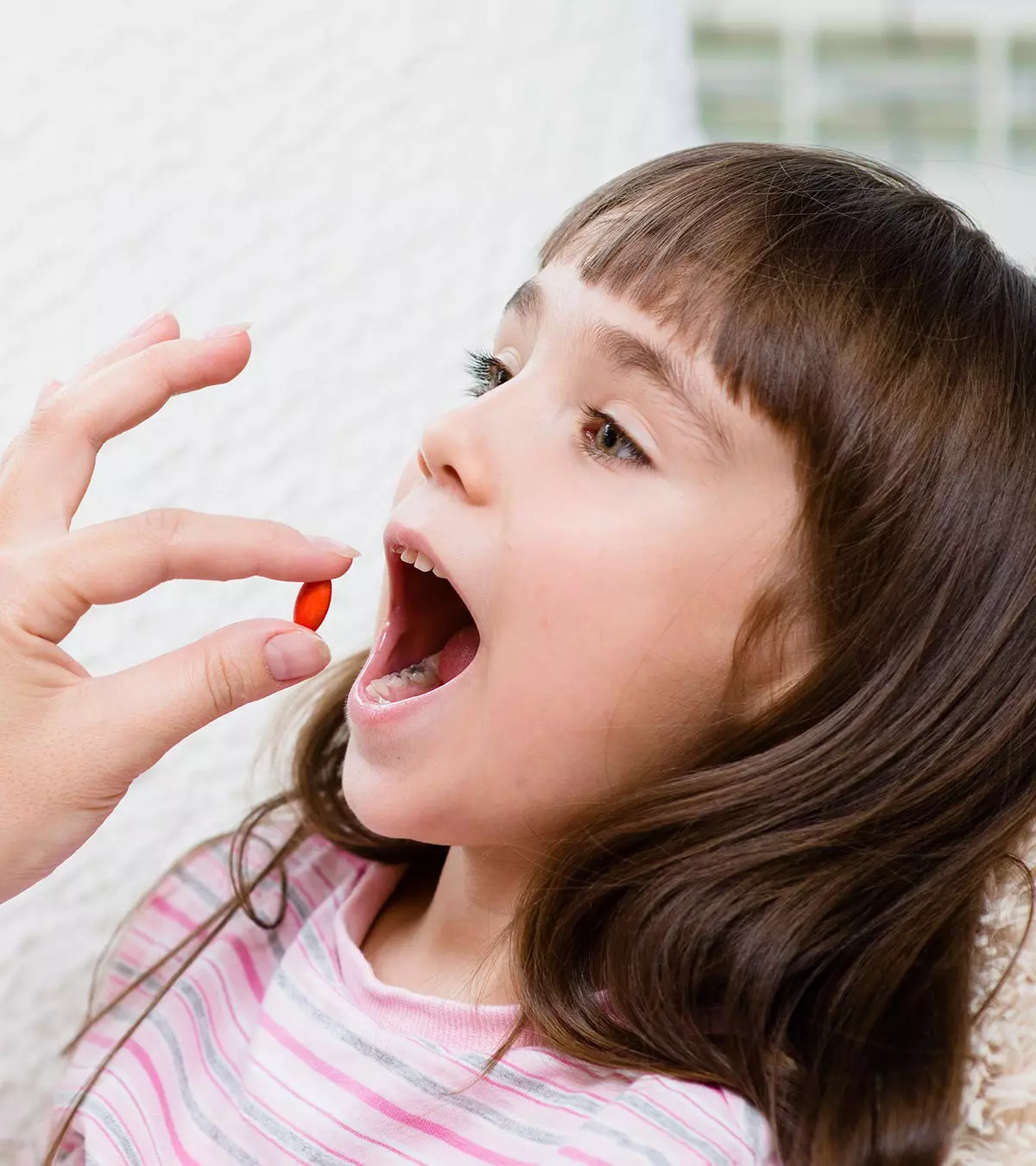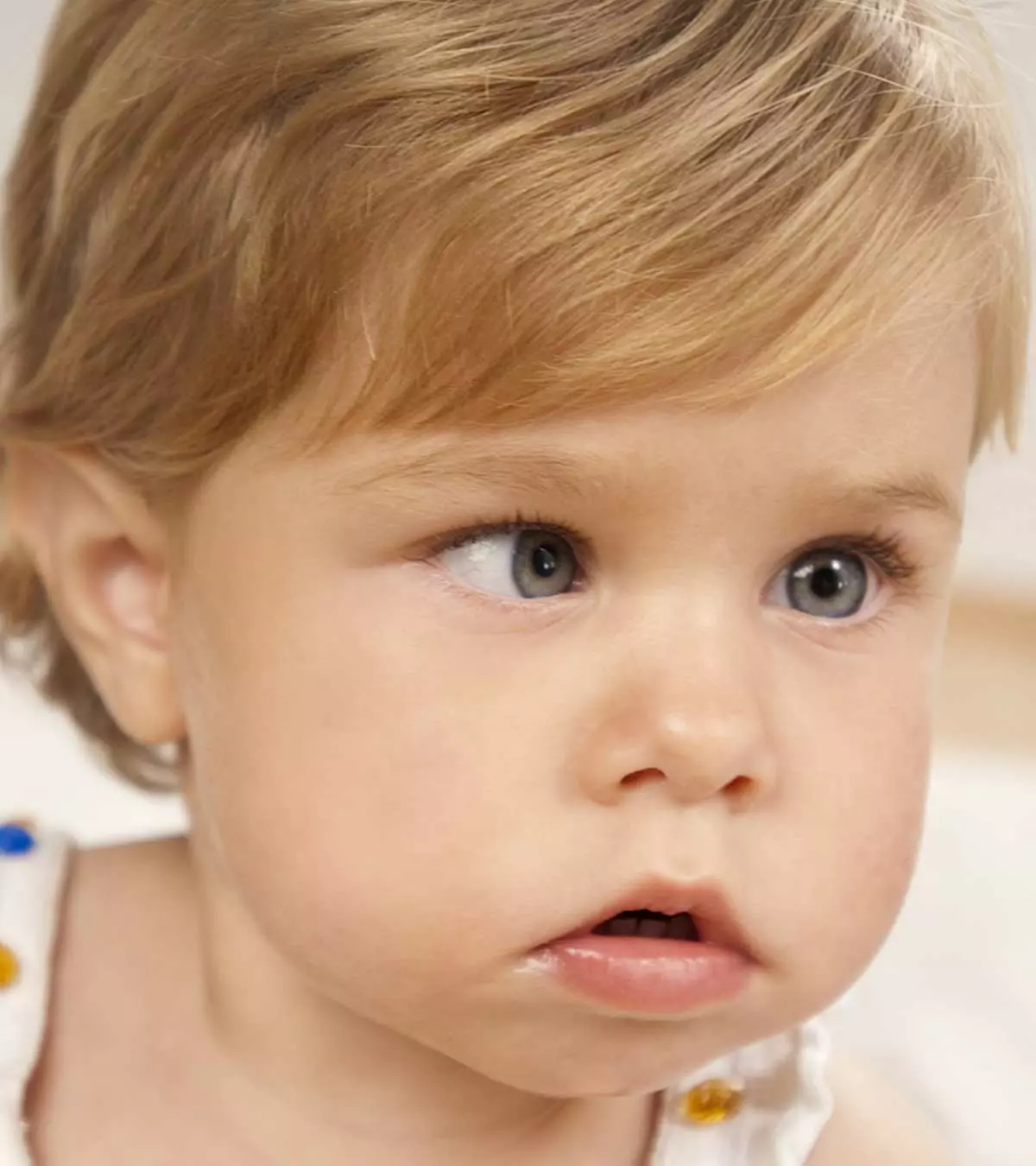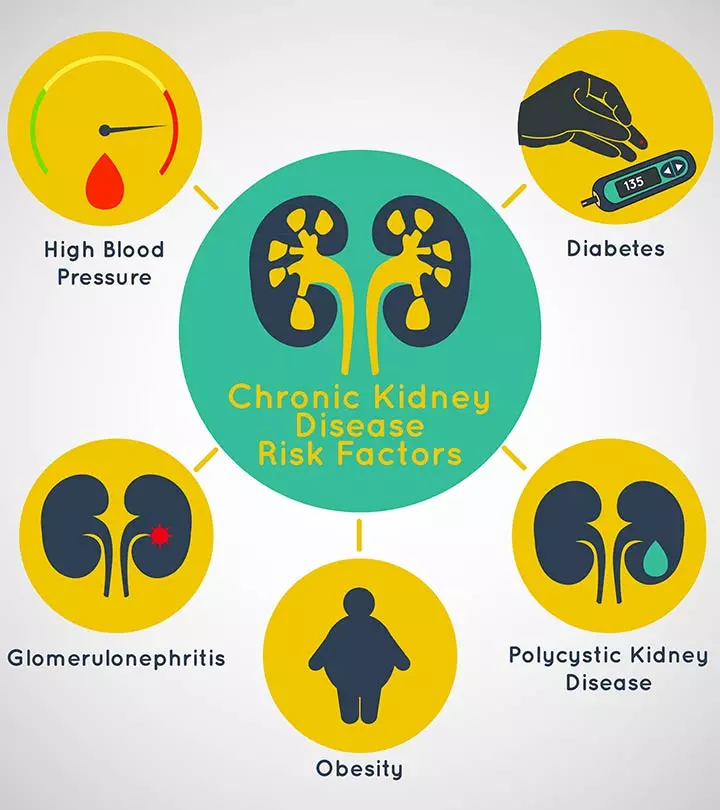
Image: ShutterStock
Although some lung cancer cases are noticed in young people, primary lung cancer in teens is rare. Smoking is the major risk factor for lung cancer, and the risk may vary depending on the duration of smoking and the number of cigarettes. Some teens may develop metastaticiA progressive stage of cancer leading to the spread of cancerous cells from one place of the body to another or secondary lung cancers followed by other childhood cancers. Lung cancer is the leading cause of cancer deaths worldwide (1). Therefore, it is recommended to seek medical care to identify the cause of persistent respiratory symptoms and cease smoking habits.

Read on to know the causes, types, symptoms, tests, prevention, and management of lung cancer in teens.
Key Pointers
- Smoking is the leading risk factor for teen lung cancer, although the prevalence of the disease is rare.
- Sputum cytology, bronchoscopy, mediastinoscopy, and image-guided needle biopsy are some methods used to diagnose lung cancer in teenagers.
- Persistent coughing, breathing trouble, weight loss, voice changes, and blood in cough are the common signs of lung cancer.
- Radiotherapy, surgery, chemotherapy, and immunotherapy could be the treatment options for lung cancer.
- Teenagers may prevent lung cancer by not smoking and avoiding secondhand smoke.
Symptoms Of Lung Cancer In Teenagers

Early stages of cancer can be asymptomatic. The following signs and symptoms can be seen in lung cancers, especially in the advanced stage (2).
- A persistent cough (not going away)
- Hemoptysis (coughing up blood)
- Dyspnea (shortness of breath)
- Chest pain
- Hoarseness of voice
- Unexplained weight loss
- Headache
- Ostalgia (bone pain)
These symptoms can also be seen in other respiratory or lung diseases.
Make an appointment with your teen’s doctor if you notice any concerning signs and symptoms. Delayed interventions could increase the risk of complications such as pleural effusion (fluid in the pleural cavity) and metastasis to other parts of the body.
 Did you know?
Did you know?Causes Of Lung Cancer In Teenagers

Cigarette smoking is the cause of lung cancer in 80% to 90% of cases (3). Cigarette smoke contains carcinogens (cancer-causing substances) and results in immediate changes in the lung tissue. Teen smokers have the potential risk of developing lung tumors and cancers, even at a later age.
The following are some of the other possible causes of lung cancer in teens.
- Children who are exposed to secondhand smoke (passive smoking) may have an increased risk of lung cancer.
- Marijuana (cannabis) smoke and menthol cigarettes can also cause lung cancer (4).
- Some environmental factors, such as exposure to radon gas and air pollution, asbestos exposure can also play a role. According to the United States Environmental Protection Agency (US EPA), radon gas is the major cause of lung cancer among people who do not smoke and causes about 21,000 lung cancer mortalities yearly. AsbestosiA naturally found fibrous mineral that is heat and corrosion-resistant and known to have carcinogenic properties is known to cause cancer of lung pleura known as mesothelioma (3).
- Exposure to certain products of coal combustion and rubber or certain metal products may increase the risk of lung cancers, especially in teens who work in such industries or reside in industrial areas.
- Inherited genetic changes rarely cause lung cancer. Positive family history of lung cancers, especially in non-smokers, could indicate an inherited cause (5).
The primary cause of cancer growth is lung damage from smoking or other irritants.
 Did you know?
Did you know?Types Of Lung Cancer
Lung cancer can be divided into two groups based on the type of cancer cells (6).
- Small cell lung cancer (SCLC): It is also known as oat cell carcinoma. These are rapidly growing aggressive cancers of the lung and account for nearly 15% of total lung cancers (7). Oat cell cancers are common in heavy smokers. The cancer is often widely spread by the time of diagnosis.
- Non-small cell lung cancer (NSCLC): It is the most common type of lung cancer and accounts for about 85% of all lung cancer cases (8). The sub types of NSCLC are squamous cell carcinomaiA type of skin cancer that develops on the outer (sun-exposed) layer of the skin (formed by squamous cells) , adenocarcinomaiA type of cancer affecting glandular (epithelial) tissues and organs such as the lungs and the breasts , and large cell carcinomaiA rapidly growing form of lung cancer identified by the presence of large, abnormal-looking cells .
Primary lung adenocarcinomas are rare in teenagers. If your child had any history of acute leukemiaiA cancer of blood-forming cells and tissues characterized by an abnormal increase in the white blood cell (WBC) number or other pediatric malignancies, then they may have a higher risk of secondary cancers, including lung cancer.
Diagnosis Of Lung Cancer In Children
After the assessment of symptoms and physical examination, the doctor may order some of the following tests to confirm the diagnosis (9).
- Imaging tests: Chest X-ray and CT scan are ordered to look for any abnormal nodule or growth (mass) in the lung. CT scan or MRI scan is useful to identify smaller lesions that may not be visible through X-ray imaging.
- Sputum cytology: Laboratory microscopic analysis of sputum may help identify cancer cells.
- Bronchoscopy: This is a visualization of airways and lungs using a thin tube called a bronchoscope, which contains a special camera. Bronchoscopy can help identify lesions and collect tissue samples for biopsy.
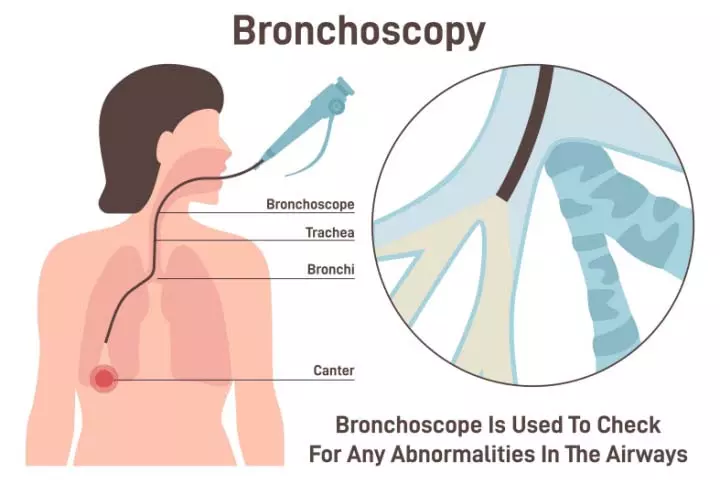
- Mediastinoscopy: It visualizes mediastinum, which is the space behind the breast bone, through a small incision at the base of the neck. Biopsy samples are collected during this procedure.
- Image-guided needle biopsy: This is a method of obtaining tissue samples using needles, with the guidance of X-ray or computed tomography (CT) images.
These tests help confirm the diagnosis and identify the type and stage of lung cancer. MRI or PET scans are often done to look for metastatic tumors, which are an important consideration in oncology when determining appropriate treatment options.

Lung cancer has stage 0 to stage IV, where the lowest stages are confined to the lung, and metastasis happens in the advanced stage. The extent of cancer spread (stage) is an essential factor in
determining treatment and outcome (10).
Treatment Of Lung Cancer In Teenagers
The treatment options for lung cancer may vary based on stage and type of cancer. Doctors may prescribe some medications for relieving symptoms, such as pain or breathing problems, until the cancer treatment is done. Immediate treatment is recommended to prevent further growth, especially in rapidly growing small cell lung cancers (SCLC). The following are included in lung cancer treatment (11) (12).
1. Lung cancer surgery
Surgical removal of cancerous tissue with healthy margins is beneficial in the treatment of lung cancer. Depending on the size and local spread of cancer, any of the following types of surgeries may be done.
- Wedge resection: Surgical removal of a small part of the lung containing the cancerous growth. It is useful in small-size cancers.
- Segmental resection: Removal of a large portion of the lung, which contains cancer.
- Lobectomy: Removal of an entire lobe of the lung that has cancer. The right lung consists of three lobes, and the left lung has two lobes.
- Pneumonectomy: The complete removal of the lung, that is, the right or left lung containing the cancer.
Thoracic surgeons may also remove nearby lymph nodes in the chest to prevent the spread. Lung cancer surgery can be done as initial treatment if the cancer is limited to the lungs.
2. Radiation therapy
High-energy beams from X-ray or proton sources are used to destroy cancer cells. Radiation oncologists often perform radiotherapy before surgery in cases of advanced cancer. The therapy can be combined with systemic chemotherapy, and can also be done to reduce symptoms in late-stage cancers.
3. Chemotherapy
Systemic chemotherapy uses intravenous or oral drugs to kill cancer cells. It can be given along with radiotherapy. Chemotherapy helps reduce tumor size before surgery. It can be performed after surgery to destroy remaining cancer cells, which may cause secondary cancers.
Chemotherapy can also be used for palliation purposes, that is, to relieve symptoms in late stages.
4. Stereotactic body radiotherapy
This radiosurgery uses intense radiation from different directions to destroy cancer growth. It is useful to treat small cell lung cancer if surgery is contraindicated.
5. Targeted drug therapy
The treatment uses drugs that block genetic material or proteins of cancer cells, thus leading to the death of cells. This is the method of treatment for recurrent and advanced lung cancers.
A few targeted therapy techniques only work for specific types of cancer cells, and these are decided based on the cytologyiStudy of the structural and functional aspects of cells analysis of biopsy samples.
6. Immunotherapy
Drugs are used to boost the immune system to fight against cancer. Cancer cells escape immune attack by specific proteins. Certain medicines can interrupt these processes, and the immune system can identify and destroy harmful cancer cells.
Immunotherapy is commonly used in locally advanced lung cancers and metastatic cases.
Palliative care or support care aims to support cancer patients before, during, and after treatment to reduce symptoms. Your teen’s oncologist may involve palliative care specialists with the cancer expert team.
Complementary and alternative therapies may not cure cancer. However, palliation may include some methods of alternative and complementary therapies such as massage, acupuncture, hypnosis, yoga, and meditation. You may seek the oncologists’ advice on this.
Prevention Of Lung Cancer In Teen
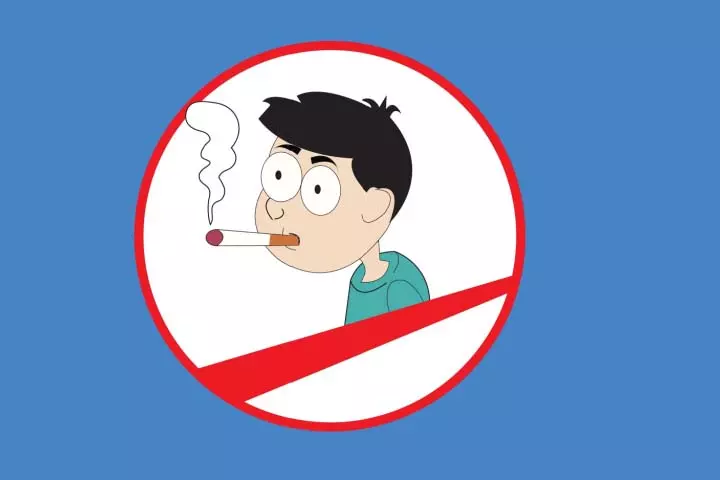
There is no way to prevent the occurrence of lung cancer in teens (13). However, you may reduce the risk by reducing exposure to carcinogens. Preventive steps may include (14):
- If your teen has a habit of smoking cigarettes or cannabis and is unable to stop, then you may seek medical care to help them. Counseling, cessation strategies, and medications or nicotine replacement products can be prescribed by the doctor if required.
- Avoid exposure to secondhand smoke.
- Check for the radon gas levels in your home if your residential area is known to have this issue.
- Avoid exposure to asbestos and other carcinogens.
Screening may help detect lung cancers early. However, it is most often recommended for people older than 55 years. You may discuss with your teen’s doctor if there are any known risk factors that warrant a screening.
You may encourage your child to participate in lung health programs and other events that sensitize children to the risks of tobacco and cannabis use. It may help your kid have an idea about the causes of cancer, and play a significant role in reducing the instance of teen marijuana use and cigarette smoking.
Lung Cancer Survival Rate
Survival rates in lung cancer patients may vary depending on the stage of cancer and the type of cancer. A doctor may share a five-year survival or prognosis rate. According to National Cancer Institute, the five-year survival rate is defined as the percentage of people in a study or treatment group who are alive five years after they were diagnosed with or started treatment for a disease, such as cancer (15). Do note during this period, the disease may or may not have come back.
The five-year survival rate is 56% for the early stages of lung cancer, where the cancer is confined to the lungs. The rate decreases to 16% in advanced stages of lung cancer (16). You may discuss with your teen’s oncologist for the exact survival rates based on the stages and type of cancer.
Frequently Asked Questions
1. How common is lung cancer in individuals under 25 years?
Non-small cell lung cancer, the most common type of lung cancer, is rare in people under age 40 and extremely rare in children and adolescents (17). According to the data collected between 2015 and 2019, the US National Cancer Institute states that only 0.2% of all new lung and bronchus cancer cases were seen in individuals between the ages of 20 and 34 years (18).
2. What are the chances of a teenager getting cancer?
According to the US National Cancer Institute, every year (19):
- 17.8 cases of cancer are diagnosed per 100,000 children under 15 years
- 77.4 cases of cancer are diagnosed per 100,000 adolescents and young adults between 15 and 39 years
3. What type of cancer is most common in teenagers?
According to the US National Cancer Institute, the most common types of cancer among teenagers are (19):
- Ages 0-14 years: Leukemias, brain tumor, and nervous system tumors
- Ages 15-19 years: Brain and nervous system tumors and lymphomasiCancers that affect the lymph nodes and lymphatic system (a system that helps provide immunity)
4. What are the odds of a child getting cancer?
Childhood cancers are rare, and about 1 in 285 in the United States is diagnosed with cancer before age 20 (20).
5. Can I have lung cancer without a cough?
Early stages of lung cancer may not cause symptoms, such as cough, in some individuals. Some people have early symptoms, while others do not have any symptoms until the cancer spreads (21).
6. Where does lung cancer start?
Lung cancer usually starts in the bronchi or other parts of the lungs, such as the bronchioles or alveoli (22).
Lung cancer in teenagers is increasing at an alarming rate, mainly due to smoking and exposure to secondhand smoke, radon gas, and air pollution. While its symptoms, such as persistent cough and chest pain in teens, are similar to those of other respiratory problems, you should take your child to the doctor if you detect any concerning signs and symptoms. Early detection and treatment may reduce the risk of fatal complications; thus, as a parent, you should be aware of lung cancer to make more informed treatment decisions.
Infographic: Treatment Modalities For Lung Cancer In Teenagers
Prevalence of lung cancer in teens is uncommon but curable when diagnosed early. Also, depending on the stage and severity of the disease, your teen’s doctor will suggest a treatment option, such as chemotherapy or surgery. The infographic below lists the available treatment options for treating lung cancers in teenagers.
Some thing wrong with infographic shortcode. please verify shortcode syntax
Illustration: Can Teenagers Get Lung Cancer? Signs Causes And Treatment

Image: Dall·E/MomJunction Design Team
Lung cancer is a widespread disease. Watch this informative and interesting to gain a better understanding of the symptoms, diagnosis, treatment and prognosis of lung cancer.
References
1. Cancer; World Health Organization
2. Signs and Symptoms of Lung Cancer; American Cancer Society
3. Lung Cancer Basics; CDC
4. Marijuana and Lung Health; American Lung Association
5. Lung cancer risk factors; The Rogel Cancer Center; Michigan Medicine
6. Lung Cancer Risk Factors; CDC
7. Lung cancer – small cell; U.S. National Library of Medicine
8. What Is Lung Cancer?; American Cancer Society
9. Tests for Lung Cancer; American Cancer Society
10. Lung cancer staging; American Lung Association
11. Non-Small Cell Lung Cancer Treatment (PDQ®)–Patient Version; National Cancer Institute
12. Small Cell Lung Cancer Treatment (PDQ®)–Patient Version; National Cancer Institute
13. Can Lung Cancer Be Prevented?; American Cancer Society
14. Lung Cancer Prevention (PDQ®)–Health Professional Version; National Cancer Institute
15. Five-year survival rate; National Cancer Institute
16. Lung Cancer Fact Sheet; American Lung Association
17. Pediatric Non-Small Cell Lung Cancer; National Organization for Rare Disorders
18. Cancer Stat Facts: Lung and Bronchus Cancer; National Cancer Institute
19. Cancer in Children and Adolescents; National Cancer Institute
20. Types of Childhood and Adolescent Cancers; American Academy of Pediatrics
21. Signs and Symptoms of Lung Cancer; American Cancer Society
22. What Is Lung Cancer?; American Cancer Society
Community Experiences
Join the conversation and become a part of our nurturing community! Share your stories, experiences, and insights to connect with fellow parents.
Read full bio of Dr. Richard Mario Lurshay
Read full bio of Dr Bisny T. Joseph
Read full bio of Swati Patwal
Read full bio of Anindita Ghatak







